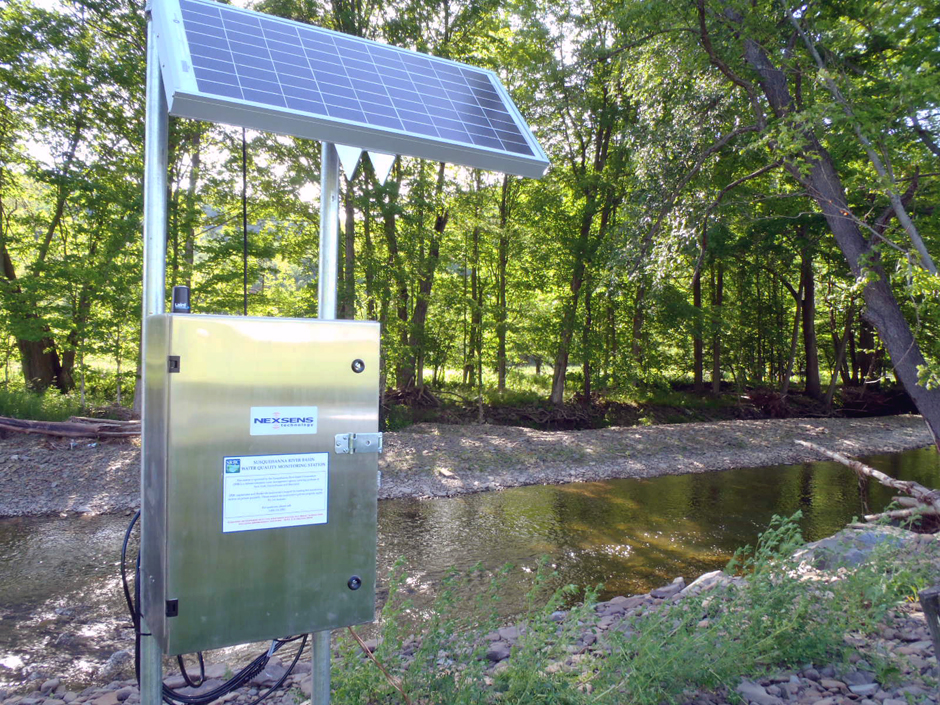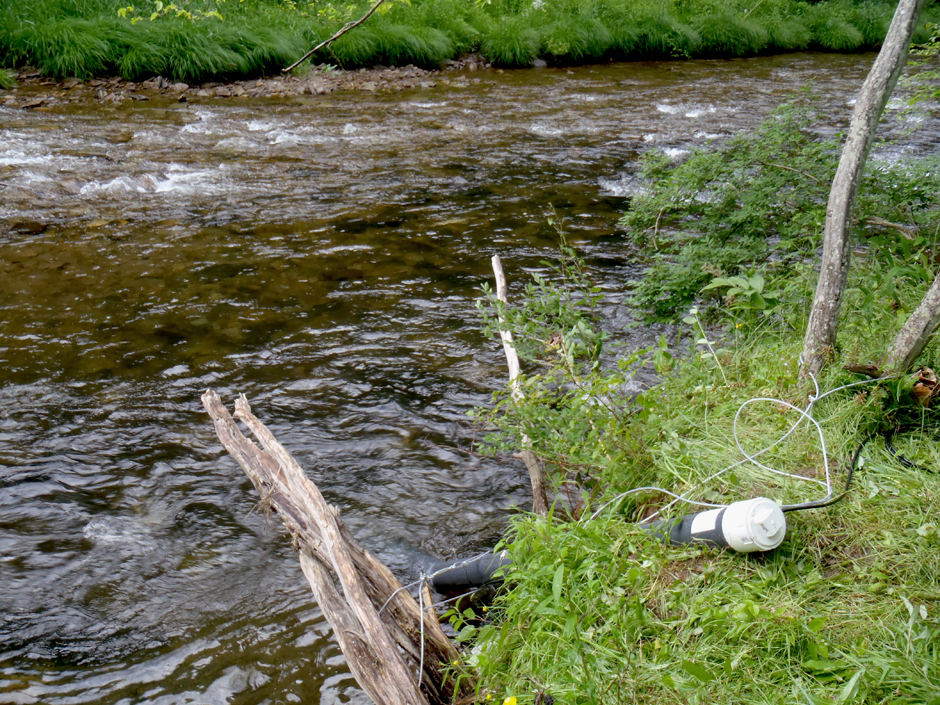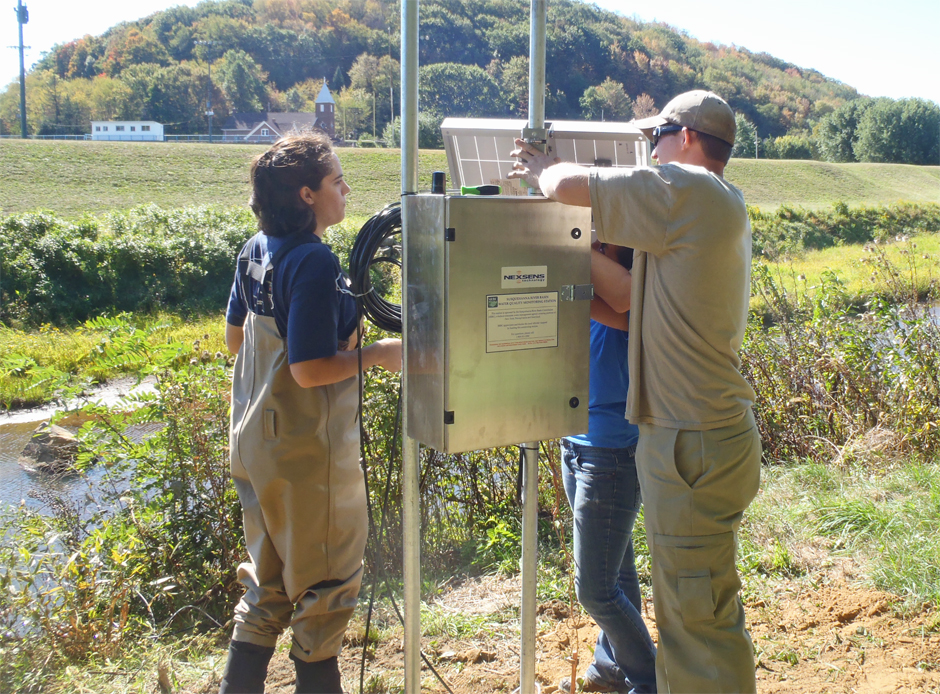Susquehanna River Basin Commission: Cloud Data and Water Quality Monitoring
 Snake Creek, Susquehanna County, PA (Credit: Dawn Hintz, SRBC)
Snake Creek, Susquehanna County, PA (Credit: Dawn Hintz, SRBC)As technology becomes more closely interwoven with water quality monitoring, some organizations have found themselves forced to catch up, but not the Susquehanna River Basin Commission (SRBC). The SRBC has had a long-standing relationship with remote data collection. With the establishment of their Early Warning System (EWS) in 2003 and their Remote Water Quality Monitoring Network (RWQMN) in 2010, the commission has shown clear dedication to water quality monitoring.
Background and History of the Continuous Instream Monitoring System
The EWS and RWQMN merged to become the Continuous Instream Monitoring system. Environmental scientist Dawn Hintz shares, “The original intent of the RWQMN was completely related to natural gas, to the unconventional natural gas industry.” However, the SRBC saw great potential in continuing to invest in water quality monitoring and expanding into other areas of focus. “Since that point, we have realized how much value we could have by looking at our entire basin,” states Hintz.
The EWS started in 2003 with just two monitoring systems located upstream in New York. In 2012, the RWQMN had more than 45 stations throughout the basin. The commission expanded the network in 2016, shifting its focus outside of natural gas production. Today, the CIM system is about to reach 70 remote monitoring systems disbursed throughout the Susquehanna River Basin region.
Hintz studied agronomy and soil science in school but found her way to SRBC in 2002. “I was looking for a job that would be a mix of indoor and outdoor work,” she describes. Despite her field of study not being directly related, soil knowledge was easily transferable to water quality. The transition to managing the RWQMN, now called the CIM system, in 2010 was easy thanks to shared data interests. The CIM network focuses specifically on obtaining information on the following parameters:
- Water temperature
- Specific conductance
- pH
- Dissolved oxygen
- Turbidity

West Branch Pine Creek, Potter County, PA (Credit: Kim Dagen, SRBC)
Why Use Remote Water Quality Monitoring Equipment
For the SRBC, a remote monitoring system is a top priority. Hintz recalls that “we do have a somewhat large basin, so this allows us to have monitoring happen at these sites without someone having to be there on any type of regular basis.”
The remote systems also allow for larger data sets and make trends easier to spot. Hintz points out, “Discrete samples have a lot of value as well, but obviously you could be missing anything that is happening in between–especially when it comes to a spill, any type of pollution, or general storm events.” Continuous sampling can occur more consistently and cost-effectively with a remote system.
With manual data collection, scientists have to traverse to sampling sites to either conduct discrete sampling or have to download data regularly. Having to go to the site to retrieve data is inconvenient as it prevents valuable data from reaching the website in a timely manner. Hintz adds, “Real-time is the easiest for us to manage because we can see what’s happening in-house. If we see a problem, we can send our staff to see what’s going on without losing a whole month’s worth of data.” Remote data collection allows passive monitoring and for researchers to only be present when necessary, allotting more time to be dedicated elsewhere.
Collecting Data Overtime
“You can build this large data set with continuous monitoring. We’re beginning to look at water quality trends,” states Hintz. “About 2/3 of our sites have at least 10 years of this data, so we feel confident to be able to look and see if there are any trends.” A trend report is planned to be released this summer and will outline exactly what the commission has seen since the inception of the network.
Climate change is a big topic in the water quality world, and these long-term observations allow for changes to be observed over time. Fortunately, Hintz notes, “We haven’t seen huge shifts, which is actually good. You’re not looking for streams to degrade.”
Even without major shifts, monitoring minor changes is just as important. Hintz says that temperature has been a significant point of focus recently, even by outside organizations. Monitoring temperature consistently and over a long period can show the gradual rise or fall in temperature compared to the larger shifts observed by manual sampling.
Temperature changes have a rippling effect on aquatic ecosystems. Stakeholder groups from all sides have reason to care about temperature shifts. People living in the basin see how water quality variances impact the environment around them, and state governments rely on the river as a water source.

SRBC staff maintaining monitoring equipment along Chest Creek, Cambria County, PA. (Credit: Dawn Hintz)
Early Warning Signs in Water Quality Data
While long-term trends are important for observing subtle changes in water quality, the data also impacts the immediate future. The publicly reported data helps guide water treatment facilities. Hintz explains that water quality alerts seen by water treatment facilities (often turbidity warnings), let them “know they may need to change their water treatment process.”
The real-time data collection is enabled by NexSens’ X2 data logger with either 4G LTE cellular or Iridium satellite communications and hosted digitally in a SQL database that is then transferred to the website. The data server collects information and automatically alerts providers, much earlier than manual testing efforts, if something is wrong.
Since the SRBC covers part of New York, Pennsylvania, and Maryland, there are both governmental and local groups invested in the data. “Most of our data is online–it’s all public,” Hintz says.
Future Expansion and Connections across Interest Groups
While the commission has expanded the CIM system gradually over the past several years, they are likely reaching a pause on installing new stations as the commission prefers to rotate existing systems when possible. Hintz explains, “If we have interests in certain areas, then we’ll shift rather than put a new station out.”
Fortunately, the data gathered by the Continuous Instream Monitoring system is publicly available and exists to better the region and encourage early response in emergencies. Hintz adds, “The good thing about us is that we don’t work by state boundaries. We can monitor the whole Susquehanna River Basin. So we cover the southern tier of New York, half of Pennsylvania and a small portion of Maryland before it flows into the Chesapeake bay.”
“The Susquehanna River Basin Commission is a federal/interstate governmental agency responsible for protecting and wisely managing the water resources within the 27,500 square-mile Susquehanna River Basin without regard to political boundaries. The Susquehanna rises and flows through New York, Pennsylvania, and Maryland into the Chesapeake Bay.” The SRBC continues to serve the residents of the Susquehanna River Basin by providing accurate and public water quality data.




Pingback: Environmental Monitor | Monitoring Water Pollution in Keweenaw Bay
Pingback: FishSens Magazine | Understanding Cancer in Wild Fish - FishSens Magazine
Pingback: Environmental Monitor | Summer 2022 Environmental Monitor Available Now - News